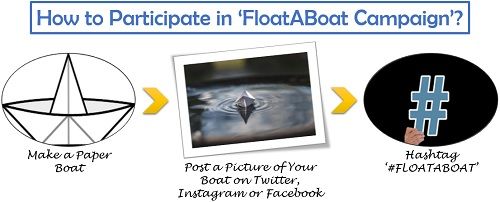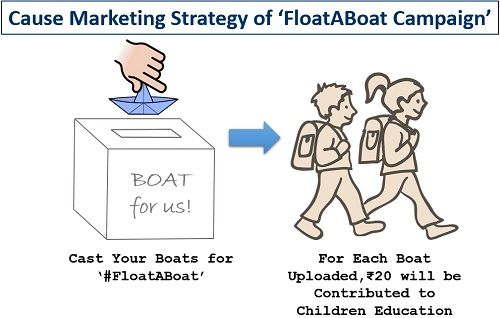Definition: Digital marketing refers to the marketing operations and activities which are carried out over the internet. The purpose is to capture the attention of a vast customer base, who spend a lot of time on social media and other online platforms. Hence, it is very different from the traditional marketing approach.
In the present business situations, digital marketing has proved to be an effective means of directly reaching out to prospective consumers. It can be seen as a useful tool for segmenting the market and targetting the right audience.
Content: Case Study on Digital Marketing
- Paper Boat’s Innovative Digital Marketing
- ‘FloatABoat’ Digital Marketing Campaign
- What made Paper Boat a great success?
- Conclusion
Paper Boat’s Innovative Digital Marketing
To understand the practical application of digital marketing in the real world business situation, let us unfold a case study. We will discuss one of the most renowned and distinctive beverage brand ‘ Paper Boat’:
About the Brand ‘Paper Boat’
Paper Boat is an innovative Indian beverages brand which has created a strong brand presence in the market through its emotional connect and revival of childhood memories.
Thus, it was a unique idea of combining the product with nostalgia, as the tagline says ‘Drinks and Memories’. The parental company of Paper Boat is ‘Hector Beverages Private Ltd.’.
Hector Beverages Private Ltd. was formed in the year 2009, by Neeraj Kakkar, Neeraj Biyani, James Nuttal and Suhas Misra. The company was engaged in the manufacturing of protein drink ‘Fissia’ and energy drink ‘Tzinga’.
The vibrant brand, ‘Paper Boat’ was later launched in the year 2013 for introducing innovative products, i.e., traditional drinks in the niche market. The company initially operated from a single plant in Manesar, Gurgaon.
Today the brand is not only serving the Indian market with a wide range of traditional Indian drinks but also export the products to other countries including Canada, Nepal, Australia, United States of America, United Arab Emirates and the United Kingdom.
Vision
The brand was initiated with a view of preserving the traditional or ethnic recipes of Indian beverages like Aam Panna, Aam Ras, Jaljeera and many more. It focussed on catering the urban markets of the country and reviving the moments of childhood within the consumers, by integrating ‘Drinks and Memories’.
Digital Marketing Approach
The Paper Boat’s marketing approach was highly innovative and nostalgic, imprinting the brand name in the minds of customers. The customers can easily relate to the brand message and therefore, to its products also.
Following are the primary marketing techniques adopted by the company to allure prospective customers:
Social Media Approach
Paper boat reached out to its customers and followers on social media platforms like Instagram, Facebook, Youtube and Twitter.
The storytelling approach was considered, where the company created a social media page or channel. It pictured a brand philosophy, ‘Life is still Beautiful‘, where people were asked to share their childhood memories and stories.
The discussions went on from flying kites, playing Raja, Mantri, Chor, Sipahi and flames to making and floating paper boats. Thus it led to the creation of a strong brand interaction, where Paper Boat connected with the lives of people.
Customer-Centric Approach
Paper Boat never had a product selling approach; instead, it went on with the brand philosophy and focussed on connecting with people by reminding them of their childhood memories.
The company relate its products with the consumer’s childhood and therefore, established a customer-centric brand.
‘FloatABoat’ Digital Marketing Campaign
Now, let us discuss one of the most prominent digital marketing idea, adopted by the brand in the which was centred over a cause, i.e., children education.
Paper Boat aired its campaign ‘FloatABoat’ on popular social media platforms in the monsoon season and asked the people to make a boat out of paper, float it, click a picture and upload it on Twitter, Instagram or Facebook with a hashtag ‘#FloatABoat’.

The brand worked together with a humanitarian service organization of West Bengal, named ‘Parivaar’. This organization took care of orphans, girl child or kids of tribal region.
For each picture of the paper boat shared for ‘FloatABoat’, the company would donate ₹20 for the education of the underprivileged children. The purpose of this initiative was to integrate childhood with monsoon and paper boat and then everything to kids education.

Under this campaign, the brand also uploaded a video advertisement, where a classroom was portrayed, and parents were asked to make paper boats. When many of them failed to do so, their children were asked to help their parents. The video whose purpose was to demonstrate how a paper boat is made ended with the line:

Through this video, the company not only captured the public attention towards the campaign but also made it easy to participate for those who didn’t know or forgot to make paper boats.
Even the buyers of the product on Amazon and Paytm were sent letters to spread awareness about the campaign and to give them a reason, i.e., a noble cause for making paper boats.
Thus, this initiative motivated the mass public to join the noble cause and also build a positive brand image in the market.
What made Paper Boat a great success?
Paper Boat has been an excellent example of innovative digital marketing. Today, Hector Beverages Pvt. Ltd. generates more than 75% of its revenue from Paper Boat products. The marketing mix of the brand’s products has also been unique and distinct from that of its competitors.
Product
Paper Boat broke the monotony of the fizz drinks, which captured a considerable share of the Indian market. It came up with a simple but innovative range of beverages, which revived the Indian ingredients along with being healthy and free from preservatives.
Price
The products were competitively priced since the competition was with both the aerated and non-aerated drinks. The product price was lower than that of the Tropicana 100% natural beverages, but it was higher than the cost of Pepsi and other aerated drinks.
Also, the products price exceeds that of Frooti and Minute Maid drinks. However, the product ingredients of the aerated drinks included carbonated, flavoured and sweetened water whereas, Paper Boat products have natural and known Indian ingredients.
Packaging
Pet bottles were initially used for the packaging of the beverages. But later, to cut down the packaging cost by almost 50% and make the product look more attractive, plastic pouches were used.
Place
The company adopted the two-level distribution channel, where the intermediaries are distributors and retailers. The brand had distributors in all metro cities and also attracted retailers in local markets by providing 5% higher profit margin than that given by its competitors.
Paper Boat reached out to school canteens for selling healthy drinks to kids. The company even hooked up with Indigo Airlines to make their products available on board.
Promotion
All the marketing strategies and activities of the brand revolved around the lost childhood days when the life and the beverages were simple. The pictures portrayed in the advertisements rekindle everyone’s childhood and knowingly or unknowingly established a brand connection.
Conclusion
By analyzing the strategies of ‘Paper Boat’, we can say that digital marketing creates a long-lasting impact on customers by facilitating market segmentation.
It also builds the brand image of the products which is essential for the company’s long-term existence.
Leave a Reply